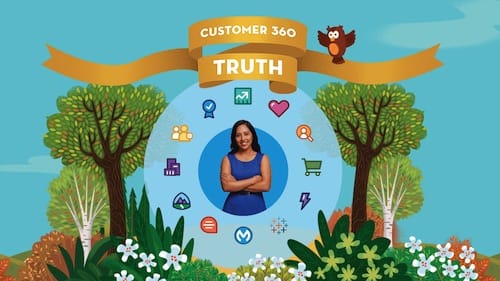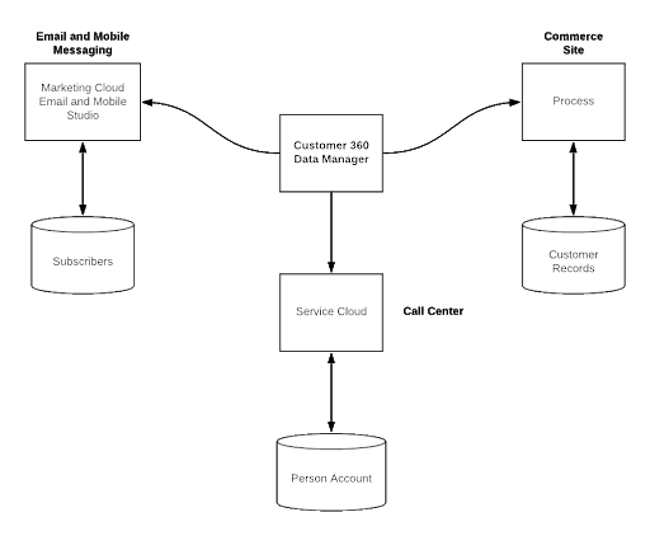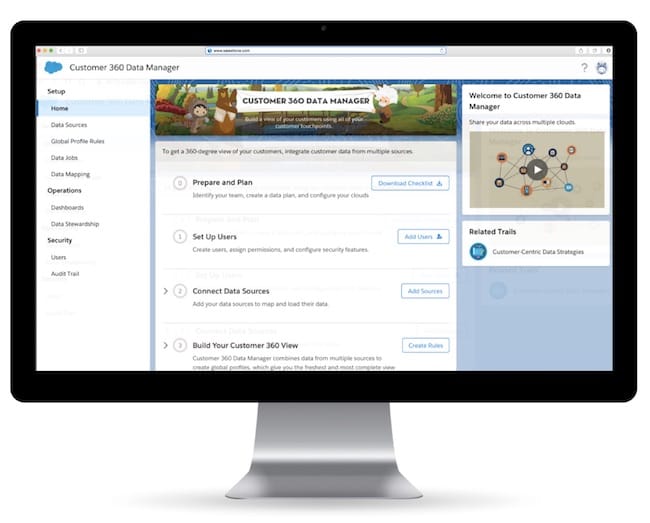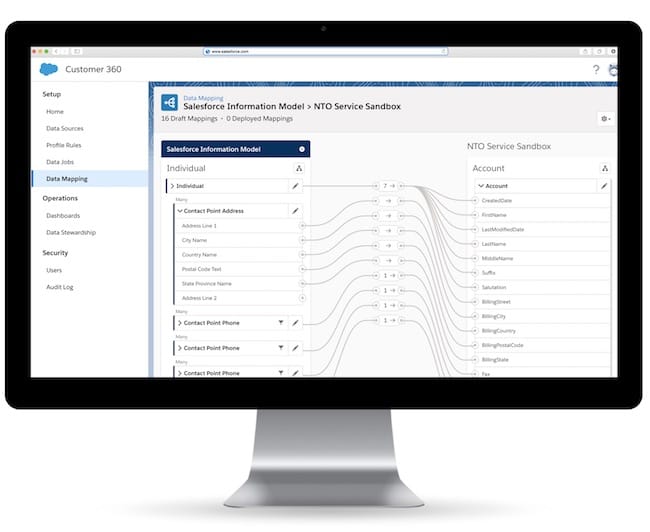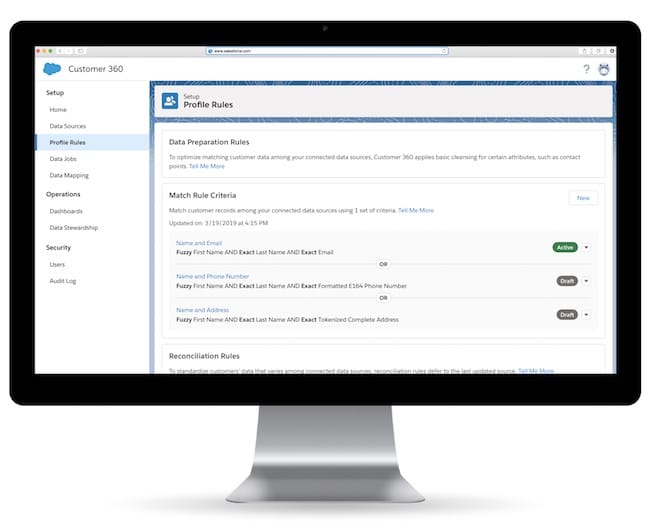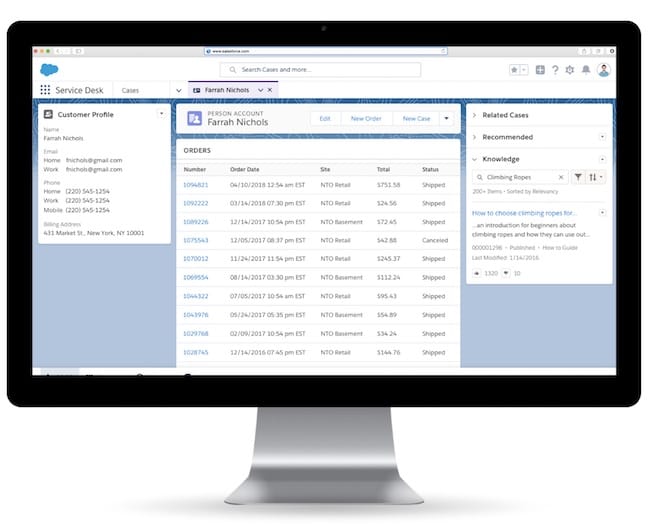At Connections '19, Salesforce added to its offerings for building a single source of truth to include an enterprise-grade customer data management and activation platform to build a unified profile of each customer and deliver hyper-personalised engagement across marketing, commerce, service, and beyond.
Today’s customer expects your business to deliver connected experiences across channels and departments — and you want to meet their expectations. On the back end, these experiences span siloed organisations, processes and infrastructure across a number of teams, from marketing and commerce to sales and service. Easier said than done, right? To help you keep up with customer demands, we created Salesforce Customer 360 Data Manager.
Customers of Salesforce B2B products have all their information in one place — a single data model for marketing, sales, B2B commerce, and service. This enables marketing teams to see how their campaigns turn into leads, opportunities, pipeline, and sales. Sales reps can view support cases before they go into a meeting, and support reps can see open sales opportunities. Additionally, customer account hierarchies and detailed contact information provide even deeper visibility.
Sales Cloud, Service Cloud, Pardot, B2B Commerce, CPQ, Community Cloud, Health Cloud, Financial Services, and Lightning Platform all use the same data model, called Standard and Custom Objects. Not only do they work together, but the data is also available in Einstein Analytics and the Salesforce Mobile app — which means you have a unified view of your customer to help you deliver the connected experience they expect.
Business to consumer
In the B2C world, Amazon has mastered the connected customer experience. After you order, you receive emails and SMS messages that confirm your order and provide delivery updates. And based on your purchase history, you get relevant product recommendations on the website and mobile app. If you have a support issue, you can create a case and an agent will have the context they need to quickly resolve your issue.
Amazon created a connected customer experience with an army of engineers. Traditional retail, CPG, banking, government agency, and pharmaceutical companies struggle to deliver this type of experience because they haven’t invested in engineering in this way. To address this issue, we looked at areas where we could combine our products and services to serve as that army of engineers for our customers.
Salesforce apps for B2C
We have leading apps for B2C engagement across Marketing, Commerce, and Service:
Marketing Cloud is a leader in Enterprise Marketing Software Suites, according to Forrester;
Commerce Cloud is a leader in Digital Commerce, according to Gartner;
Service Cloud is the #1 Service App, according to Gartner.
By themselves, they serve their purpose. But, it can be challenging to connect each cloud.
For example, in Sales and Service Cloud, B2C customer records are represented as Person Accounts Objects. In Marketing Cloud Email and Mobile Studio (f.k.a. ExactTarget) subscriber tables are called Data Extensions. In Commerce Cloud (f.k.a. Demandware) customer tables are called Customer Records. It's up to the system architect to tie them together, resolve multiple records of the same customer across systems, and then roll out connected experiences. But — there’s hope. Read on.
Salesforce Customer 360 Data Manager
Salesforce Customer 360 Data Manager is a new cross-cloud technology initiative that makes our B2C Marketing, Commerce, and Service products work better together.
With Customer 360 Data Manager, administrators register their various instances of Marketing Cloud, Commerce Cloud, and Service Cloud and then map customer records from Service Cloud Person Accounts*, Marketing Cloud subscribers (Data Extension), and Commerce Cloud Customer Profiles into one, unified view of the customer.
Rather than replicating all of the related data (like cases and order history) into a central place, which it does not do, Customer 360 Data Manager creates and stores a customer profile and acts as a hub that exchanges data and events across the systems at the time of need.
Connected customer experiences powered by Customer 360 Data Manager
To ensure you can deliver connected experiences to all of your customers, we’re building out-of-the-box, cross-cloud features, and experiences that use Customer 360 Data Manager.
For example, Service Cloud Agent Console will include a set of pre-built Lightning components that will surface a unified customer profile, Commerce Cloud order, and shopping cart data. And Marketing Cloud will generate abandoned shopping cart journeys, triggered by the Commerce Cloud.
Next steps
Our immediate goal is to help you deliver “Amazon-like” experiences to your customers by giving you the tools to build a single, unified view of your customer. However, it's important to state this isn't our entire goal for Salesforce Customer 360 Data Manager. In the future, we’ll roll out solutions to address how data is kept clean across multiple environments — along with how this affects partners and systems integrators. We’ll also focus on how we can improve Salesforce integrations on the B2B side, especially those with multi-org deployments, to optimise efficiency and ease of use.
Here’s to a future of living up to customer expectations.
Ready to blaze trails with connected customer experiences? Get your Customer 360 Data Manager badge.
This post originally appeared on the U.S.-version of the Salesforce blog.
